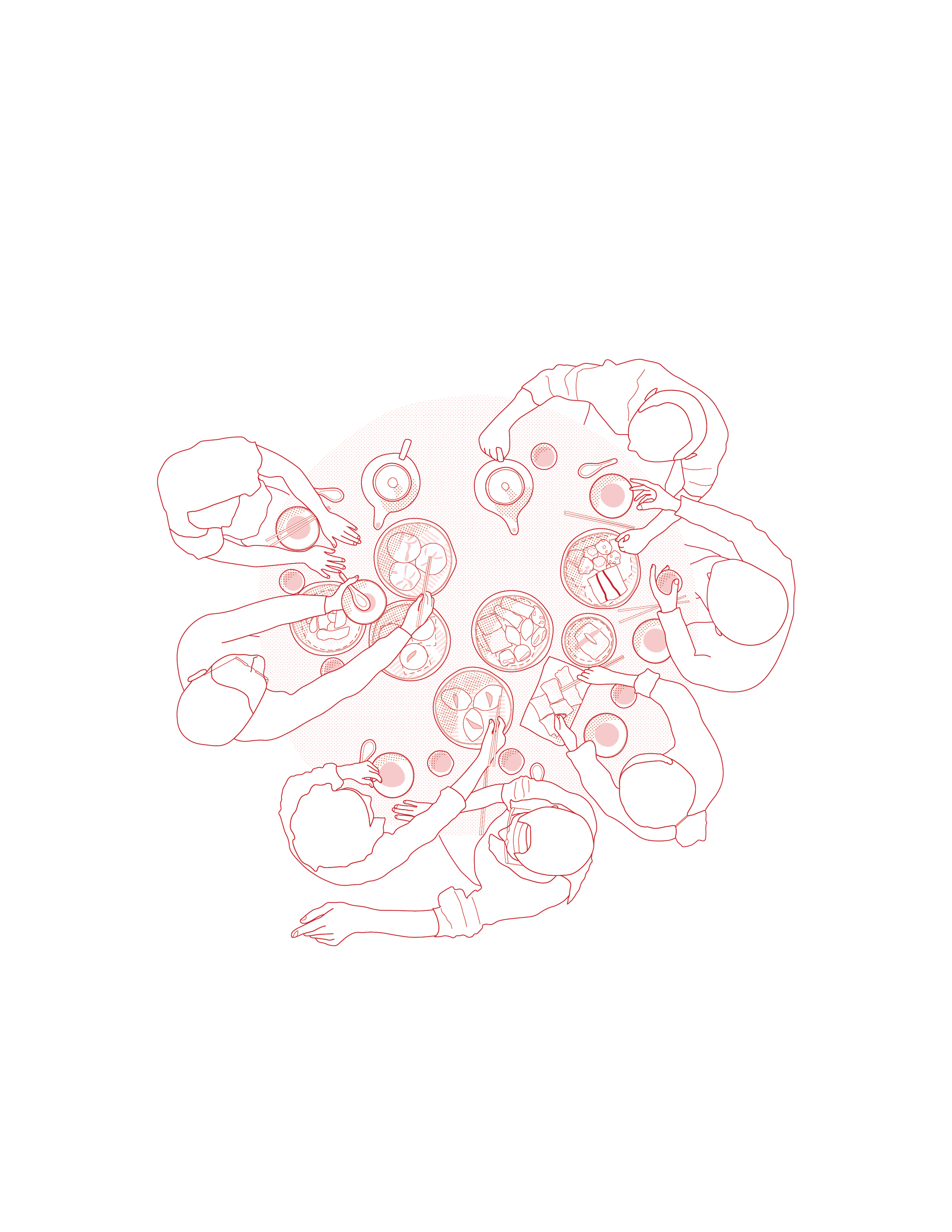Of the thesis entitled:Considering the surface: writings on people, occasion, space and place

The following collection of writings reflects on people, occasion, space and place. Together, the writings propose a design approach that provides for and responds to human presence. The human figure, as used in architectural representation, is employed within speculative sketches of urban life to consider the ways in which human presence might be revisited as a driving factor in design. By depicting figures in relation to their surrounding surfaces while engaged in eminently human routines such as dining, these writings aim to reimagine the ways we inhabit space.
The human body is a familiar tool for communicating a space’s purpose in architectural design. In architectural representation, human scale figures provide a referential spatial scale, but also convey the architect’s intentions regarding how a space should be inhabited. The affective dimensions of human scale figures can be conceptualized through the attributes of persona, form, movement and presence: the components which shape how we occupy space as individuals or a collective. Drawings which isolate these four attributes evoke radically different understandings of the same space.
A series of recollections from my own dining experiences—at a range of scales and settings—are retroactively used to explore the abstract portrayal of human presence within architectural space. As one of the most fundamental ways in which we come together, dining is a globally shared experience necessary to life and culture. Thus, this archetypal experience can reveal consistent patterns in the affective connections between objects, humans and space. I describe the spaces where such shared experiences take place through the occasions and objects which create these moments, to give form to the otherwise intangible dimensions of architecture.
By proposing a speculative alternative to the typology of inhabitation, I question the relationship between the definitions of space in architecture and its availability for pragmatic needs. In this alternative, the affective representations of occasions are tools for the people to reclaim space in a city of strictly regulated spaces. The adaptation of their everyday lives to drastically different spatial conditions suggests how we can define spaces beyond mere dimensions and boundaries, speculating on the allowances, flexibilities and intensities of space as formed by human inhabitation.
When components of space are removed from their prescribed functions, they become formal gestures empathetic to the occupants’ unique interpretations. These forms are tools of place-making that invite the human attributes of persona, form, movement and presence to define the functions of space. Descriptions of the occasions analyze how the forms accommodate the perspectives of distinct human attributes. The resulting language of place distills an architecture centred on human presence.
This collection of writings forms a theoretical framework for human-centered place-making, opening new dialogues between the representation of architectural space and its imagined occupants.
The examining committee is as follows:
Supervisor:
Dereck Revington, University of Waterloo
Committee Members:
David
Correa,
University
of
Waterloo
Robert
Jan
van
Pelt,
University
of
Waterloo
External Reader:
David Lieberman
The
committee
has
been
approved
as
authorized
by
the
Graduate
Studies
Committee.
The
Defence
Examination
will
take
place:
Wednesday,
December
18,
2019
at
9:30am
in
the
loft.
A
copy
of
the
thesis
is
available
for
perusal
in
ARC
2106A.